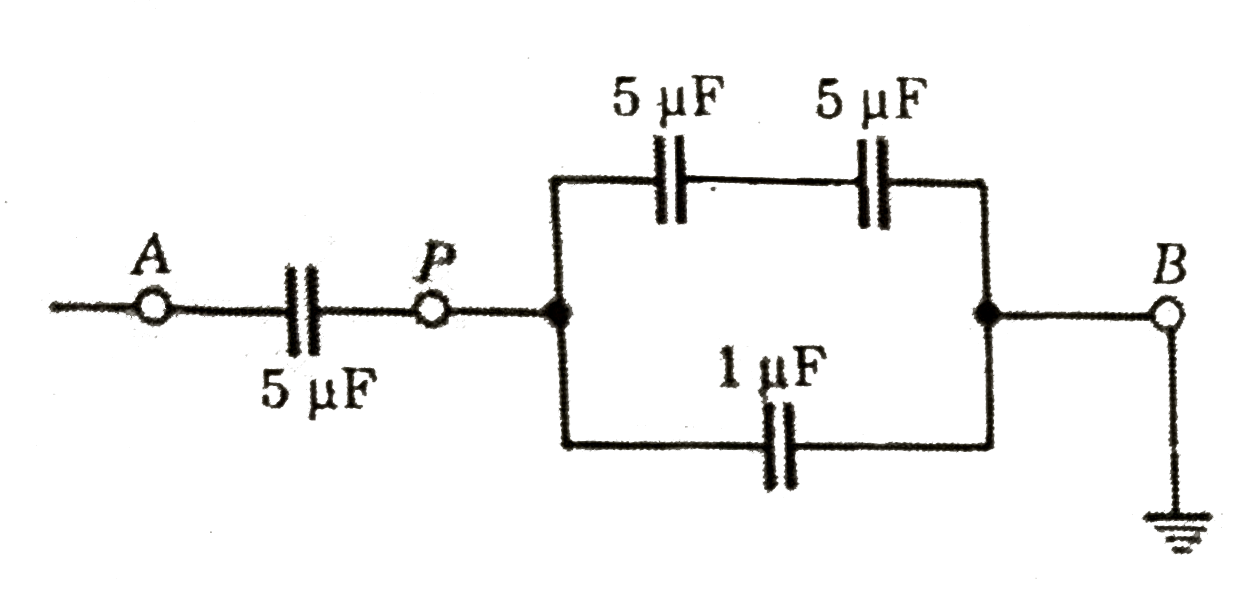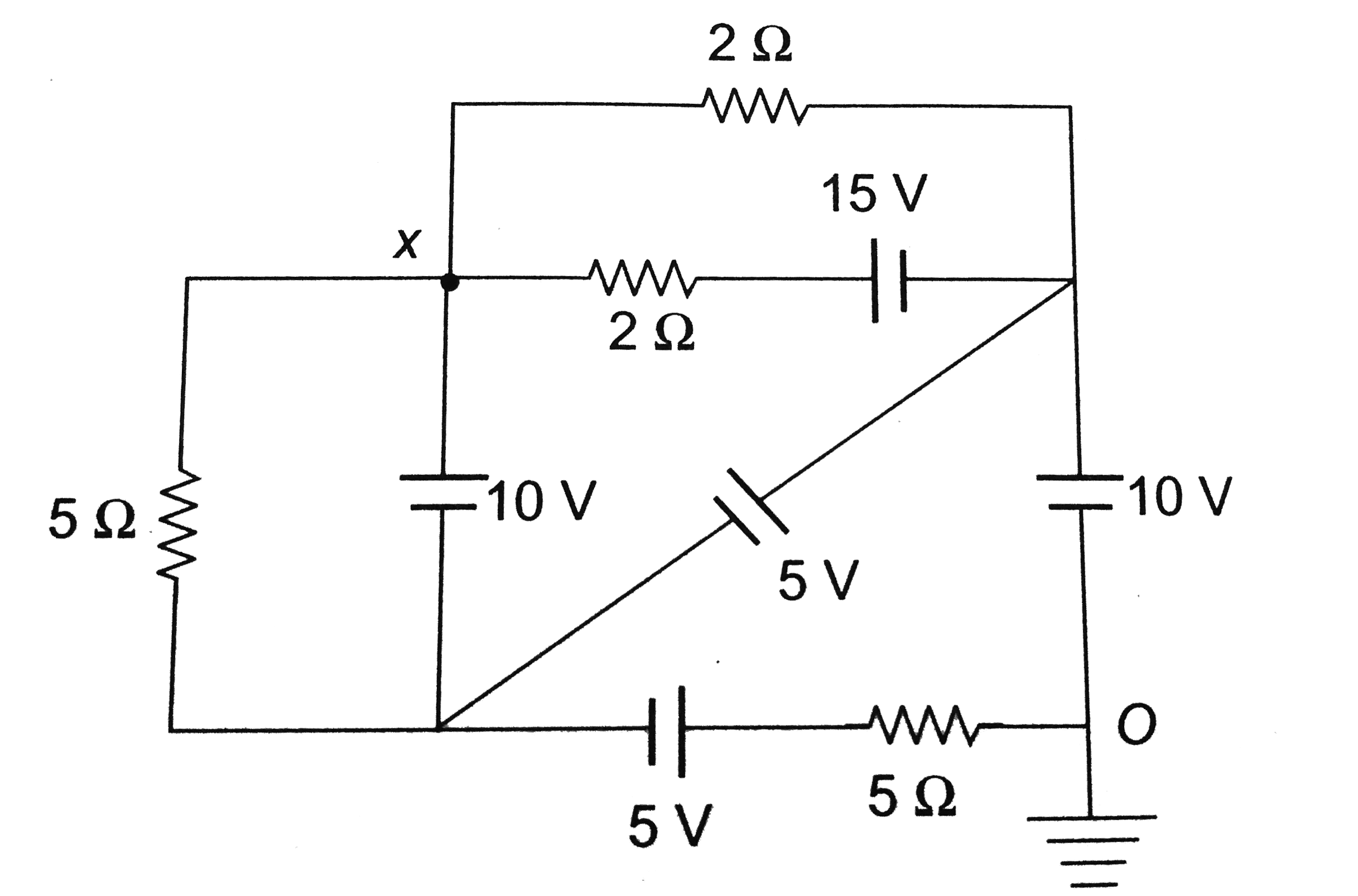In the circuit shown in the figure, if potentail at point A is taken to be zero, the potential at point B is

−2V
+1V
−1V
+2V
The correct Answer is:B

Applying Kirchhoff's first law to the point C, we find that a current of 1 A must flow from D to C to get the current of 2 A.
∴ The P.D. between D and C i.e. VD−VC=2×1=2V
But it is given that VA=0andVC−1=VA=0
∴VC=1 V and because VD−VC=2V
∴VD=2+1=3andVD−2=VB
∴3−2=VB∴VB=+1V
Topper's Solved these Questions
Similar Questions

In the circuit shown in figure. If point B is earthed and A is kept at 1500 V, then calculate the potential at the point P.View SolutionThere are nine 2μF capacitors, two 1μF capacitors and one 4μF capacitor in the circuit shown in the Figure.
(a) Identify a point in the circuit where potential is same as that of point A.
(b) Identify another pair of points which are having equal potential.
(c) Calculate the charge supplied by the cell to the network of capacitors
 View Solution
View Solution
Knowledge Check
- Question 1 - Select One
In the circuit shown in the figure, if the potential at point A behind to be zero, the potential at point B is :
 A−1VB+2VC−2VD+1V
A−1VB+2VC−2VD+1V - Question 2 - Select One
In a circuit shown in the figure, what is potential of point A?
 A2VB5VC8VD4V
A2VB5VC8VD4V - Question 3 - Select One
In the given circuit the potential at point B is zero, the potential at points A and D will be
 AVA=4V,VD=9VBVA=3V,VD=4VCVA=9V,VD=3VDVA=4V,VD=3V
AVA=4V,VD=9VBVA=3V,VD=4VCVA=9V,VD=3VDVA=4V,VD=3V
In the circuit diagram shown in Figure , the potentials of the points B, C and D are respectively -
 View Solution
View SolutionIn the circuit shown if point O is earthed, the potential of point X is equal to
 View Solution
View SolutionIn the circuit shown in figure potential difference between A and B is
 View Solution
View SolutionIn the circuit diagram shown in figure, the potentials of the points B, C and D are respectively.
 View Solution
View SolutionIn the circuit shown, the point B is earthed. The potential at the point 'A' is
 View Solution
View Solution

